VBR No. 8 and No. 9 arrived in Piney River on August 15, 1958. Both engines came from the U.S. Army Transportation Corps at Fort Eustis, VA where they had been numbered 618 and 616 respectively. They had been constructed in 1942 by the American Locomotive Company and were originally numbered 4038 and 4023. The renumbering into the Army 600-series occurred in 1954. VBR locomotives 5, 8 and 9 were identical standard Army switch engines, built to United States Railroad Administration specifications for the war effort. Hastily painted into the VBR standard black with yellow trim upon arrival at Piney River, one could still make out No. 8’s original Army numbers on her cab and number plate.
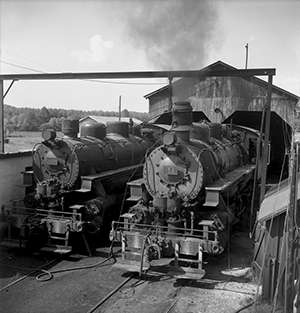
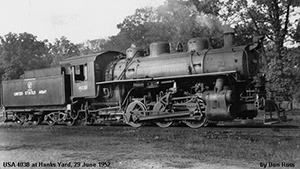
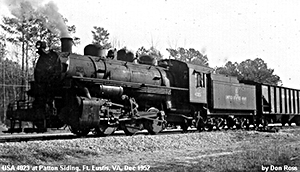
On June 21, 1959 the VBR hosted it’s second public steam excursion, operated once again for the Washington, D.C. Chapter of the National Railway Historical Society. This trip was billed as a “Photographer’s Special” and had a relatively small number of participants. The NRHS trip committee requested a boxcar, two gondolas, and the VBR’s ex-Southern Railway wood caboose as the train consist. The locomotive assigned to pull the train on this day was No. 8. The VBR borrowed two low-sided gondolas from the Southern and installed wooden benches for the riders. The boxcar was employed as a “baggage car” for the photographer’s luggage. The group traveled from Washington to Lynchburg, VA via a Southern Railway train on Saturday, then rode a chartered bus to Piney River on Sunday morning. The “Photographer’s Special” made two trips to Tye River with plenty of photo stops along the way. At the end of the day, the riders detrained at Tye River where the VBR had pre-arranged with the Southern for the Northbound “Tennessean” to make a special flag stop to pick up and return the excursion group to Washington. This was the last full-fledged “fan trip” the VBR would operate, and as with the earlier venture in 1957, the railroad had gone to considerable effort to accommodate these excursions. Only on one or two other future occasions did the VBR allow a few passengers to ride the track car or perhaps the caboose.
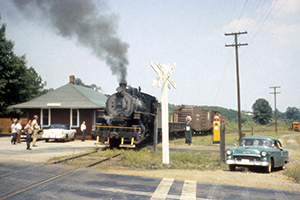
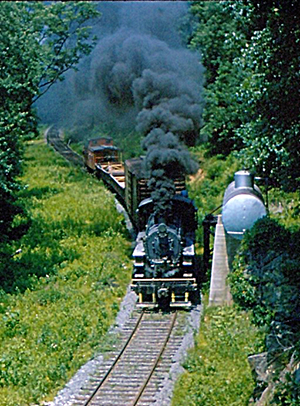
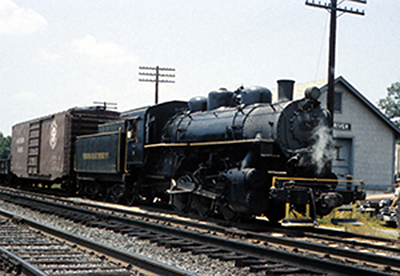
No. 8 continued to operate in VBR freight service until early-1963 when she was stored “serviceable” as the railroad began its move to convert to diesel power.
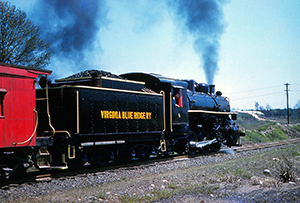
In late-1965 No. 8 was sold to Vernon Seeley, Chairman of the Board of the Delaware Otsego Railroad and shipped to Oneonta, NY shortly thereafter. It was renumbered “2” and was placed in tourist excursion service on the “DO Line” on August 3, 1966. At the same time, the Delaware Otsego had also purchased a number of spare parts for their engine for which they never paid the VBR. There still exists a thick file folder documenting the lawsuit brought by the VBR in 1967-’68 against the “DO Line” for unpaid bills. At the same time, the “DO Line” brought a lawsuit against the VBR. Evidently the VBR claimed the boiler for No. 8 was in good condition at the time of sale when, in fact, there were multiple mechanical issues.
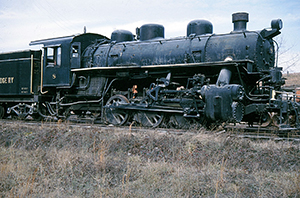
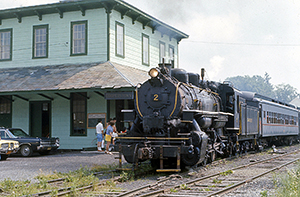
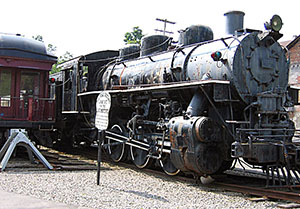
New highway construction forced the “DO Line” to relocate and in 1971 the operation reopened at Cooperstown, NY as the Cooperstown & Charlotte Valley Railroad. Steam operations with No. 2 continued until about 1975 when the locomotive was put into storage. Some years later, with the “DO Line” having grown into a large-scale regional freight carrier, the engine was placed on display at the corporate headquarters of the Delaware-Otsego System (DOS) at Cooperstown. In 2009, the DOS sold No. 2 to Bill Miller, of Eckhart Mines, Maryland. In October of that year, the locomotive was lifted onto an excessive-weight highway trailer and trucked to Miller’s heavy equipment sales facility in Eckhart Mines, where a restoration to full operation is planned. Miller is also the owner of former U.S. Army 2-8-0 No. 611 which is also stored on his property.
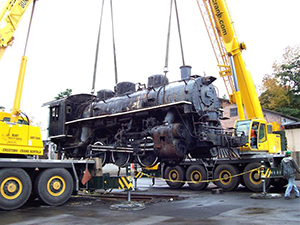
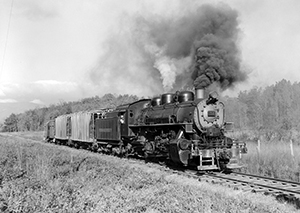
No. 9 has had an interesting life, and it is the third steam locomotive from “Th’ Blue Ridge” to now call New Jersey “home”. No. 9 was the last steam engine to be placed in operation on the VBR. Although acquired in 1958, she was not used until March 23, 1961, when she became the regular power for most VBR freights until the end of steam operations.
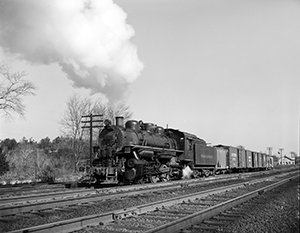
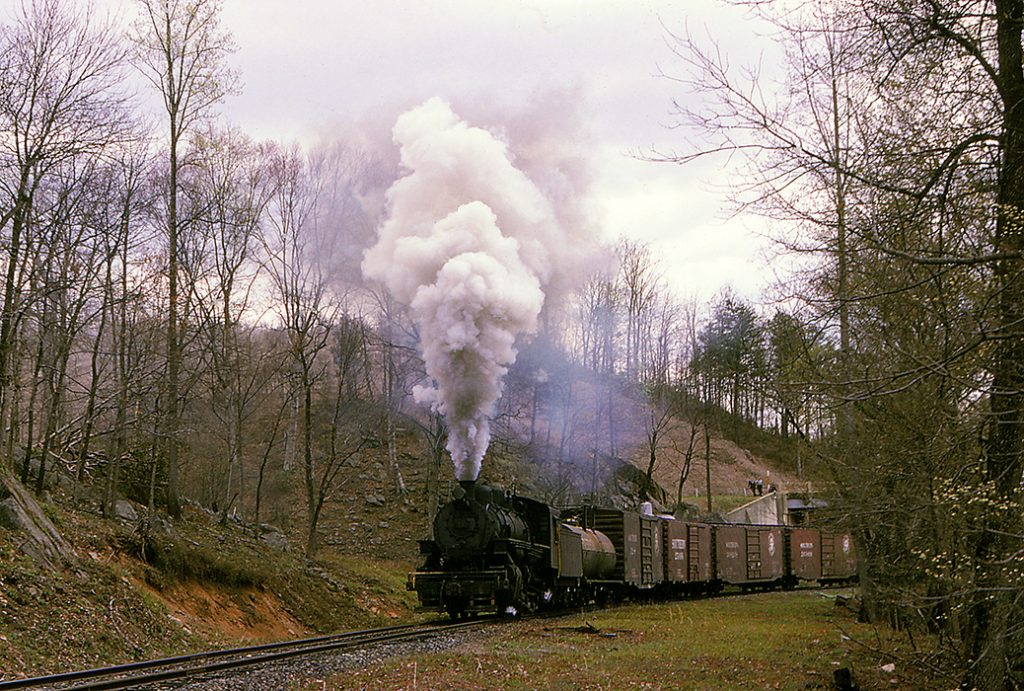
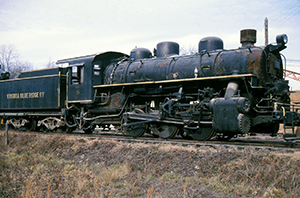
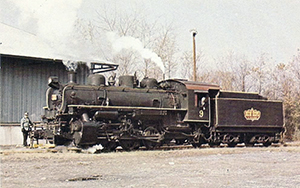
After No. 9 was sold (along with No. 7) in late-1963, she first operated in excursion service for the New Hope & Ivyland Railroad (NH&I) in June 1967. At that time the Virginia Blue Ridge Railway name was still painted boldly on her tender. Shortly thereafter, she emerged with a new paint job, featuring the NH&I’s bright herald on the tender. In 1976, No. 9 had a “make-over” of sorts when she appeared with a larger headlight mounted in the center of the smokebox door. The bell was moved from its original position atop the boiler and was secured to the original mounting plate for the headlight. While many considered it a novel and original way to “beautify” a standard U.S. Army WWII-design 0-6-0, it was actually duplicated from a practice first conceived by the U.S. Army Transportation Corps (USATC) during the 1950’s. A prime example of this can be seen in a Don Ross photo of Army 0-6-0 No. 614 (the former No. 4018) at Fort Eustis, VA on August 24, 1955. The gloss-black painted USATC 614 looks elegant with a road engine headlight and a highly-polished brass bell bolted to the top of the smokebox.
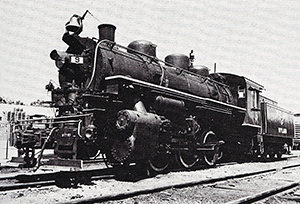
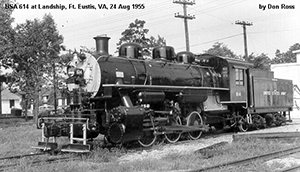
No. 9 was taken out of service in 1981, and NH&I’s ill-fated attempt at rebuilding the locomotive during 1992-’93 ended in a dismal failure. Some years prior, the driving wheels on No. 9 were swapped out and replaced with those from scrapped No. 7, while 9’s valve motion and running gear turned out to be an odd mix of parts from both engines. Even Morris County Central RR (MCC) 0-6-0 No. 4039 (now Whippany Railway Museum No. 4039) became the recipient of a small number of components that originally were part of No. 7. The MCC was in need of replacement spring rigging during the late-1970’s, and the NH&I was happy to assist their neighbor in Northern New Jersey.
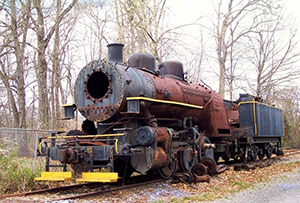
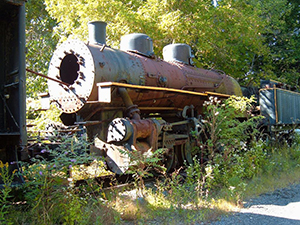
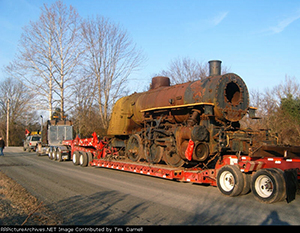
After sitting and rusting away for nearly 15 years, No. 9 was sold in September 2009 to SMS Rail Lines, a shortline freight carrier based in Bridgeport, NJ. On December 8, 2009, No. 9 was trucked from New Hope, PA to the SMS shop in Bridgeport, where work immediately began on evaluating her for an eventual return to active service…pulling freight ! When No. 9 was delivered to SMS that December day, the Garden State could now boast three steam locomotives within its borders from the storied Virginia Blue Ridge Railway. No. 9 was “welcomed” to New Jersey by her former VBR stablemates at Whippany…Nos. 4039 (VBR 5) and 385 (VBR 6). Although SMS No. 9 is a good 100 miles from Whippany, restoration crews from both SMS and the Whippany Railway Museum have been assisting one another with the respective rebuilds of the iron steeds entrusted to their care. Within a few short years, the New Jersey countryside will reverberate with the stirring sights and sounds of steam power that was once so common in the far off Blue Ridge Mountains of Virginia.
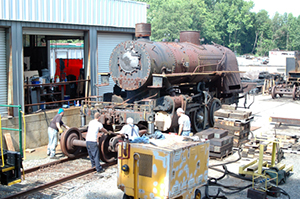
rebuild at Bridgeport, NJ
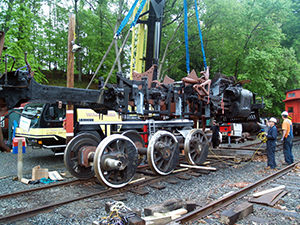
rebuild at Whippany, NJ